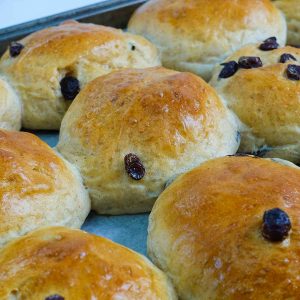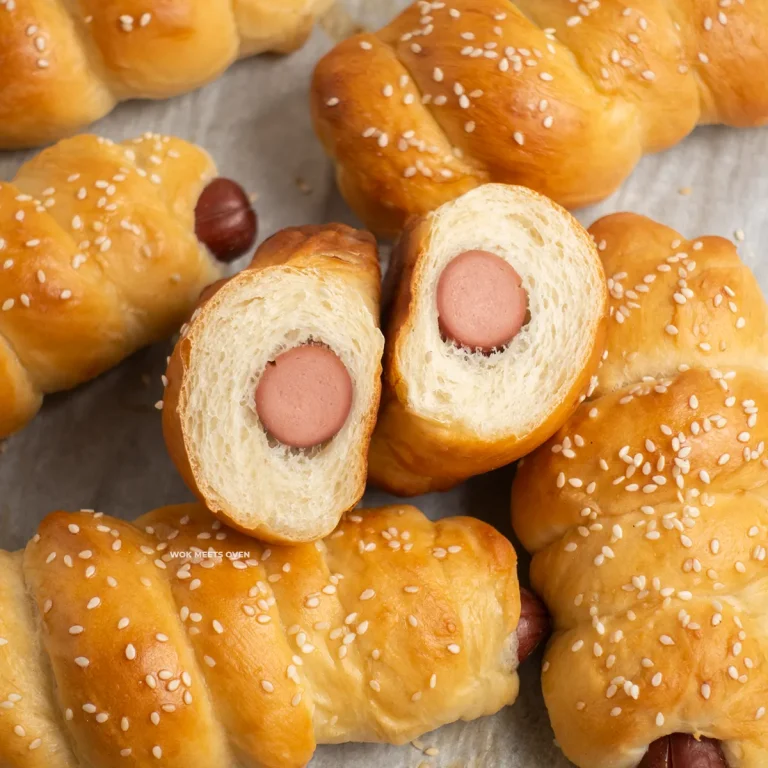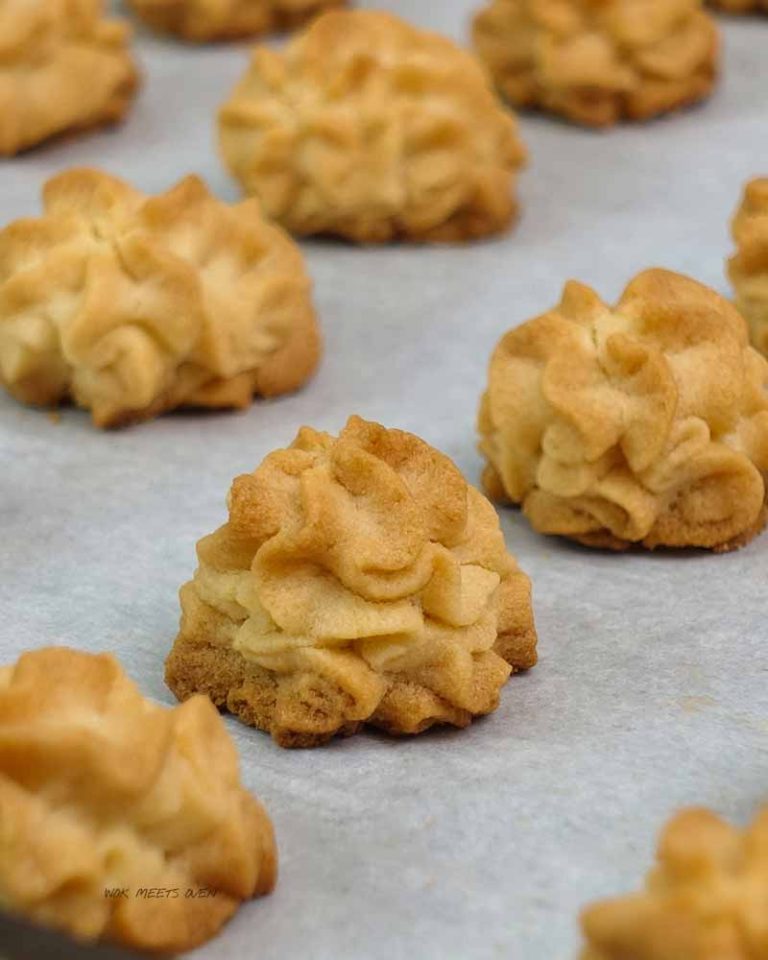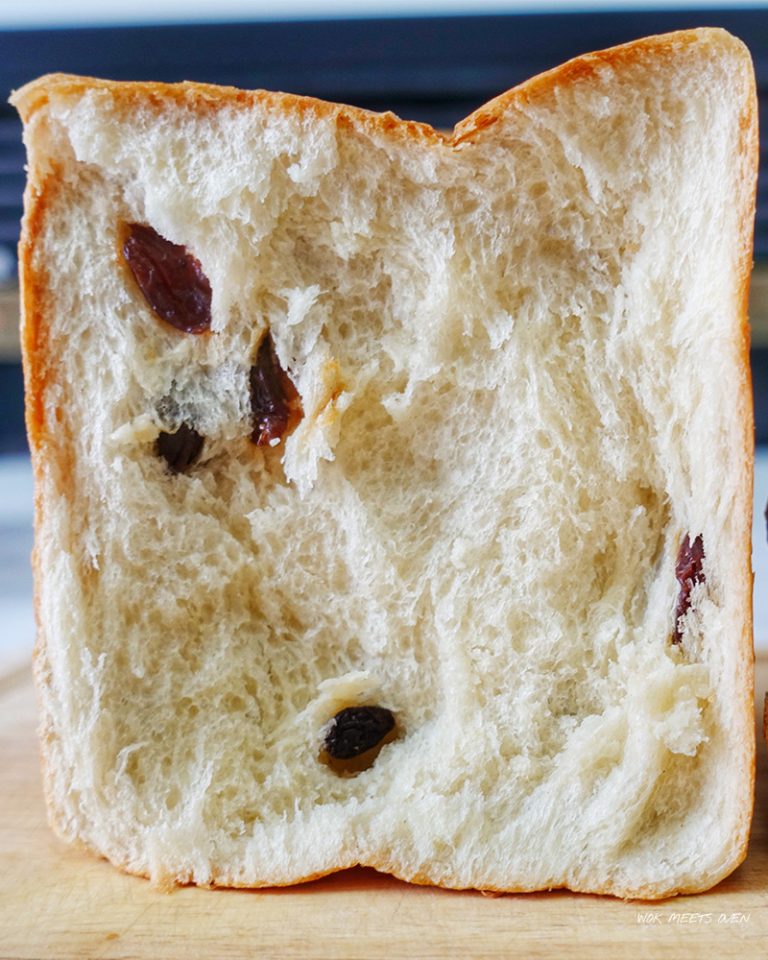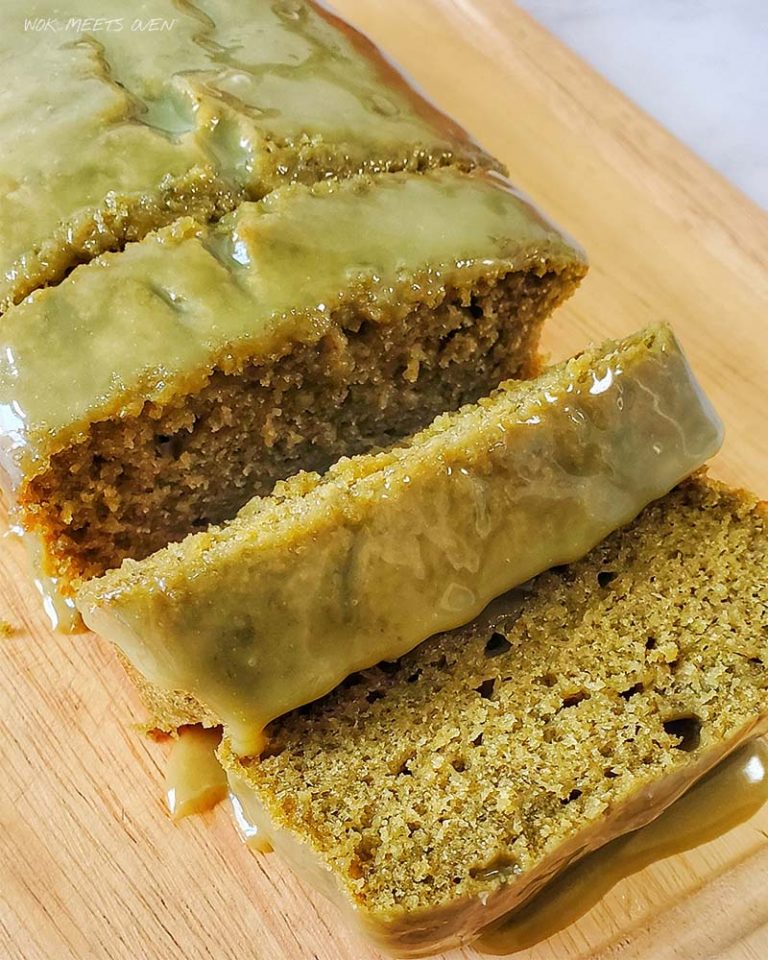This Matcha Bread Recipe Is Impossible to Resist!
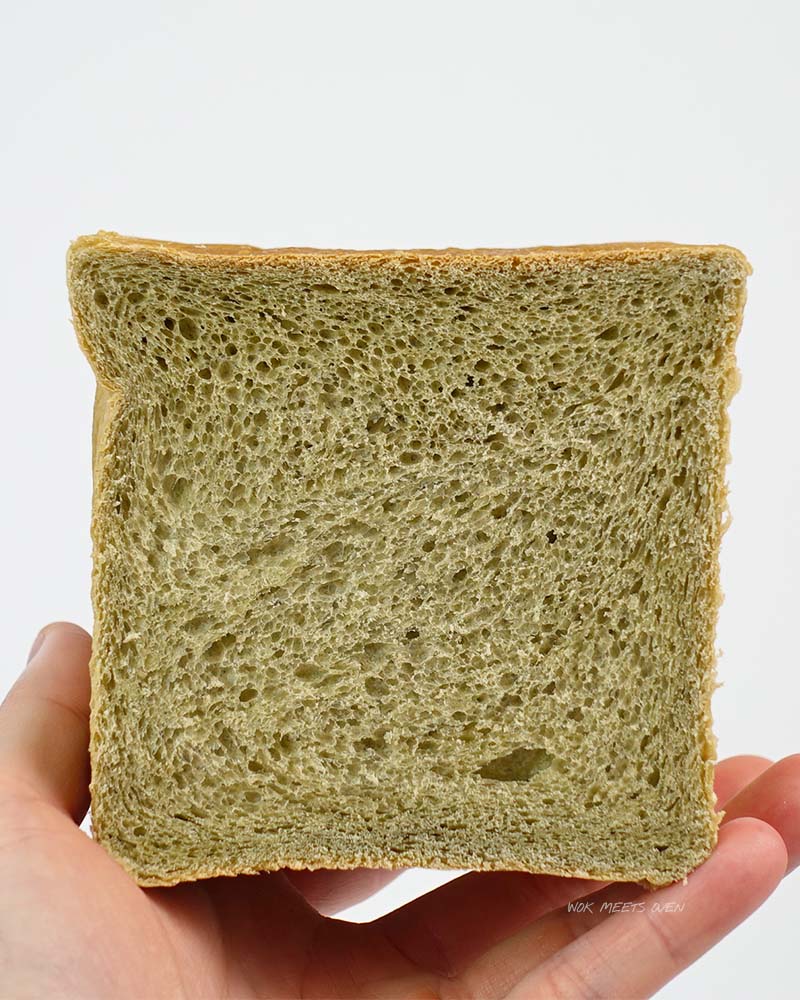
Introduction
Matcha lovers rejoice!
Today I’m going to share with you a deliciously soft and fluffy matcha bread recipe that is not only extremely easy to make, but also tastes amazing.
This Japanese matcha shokupan bread recipe is extremely fluffy and soft, has the aromatic aroma of matcha green tea and a hint of sweetness.
And because we are going to utilize the Tangzhong method of making this green tea matcha bread, you can expect a bread loaf that will be ultra light and soft, in addition to not going stale and bad for days.
This green tea matcha shokupan recipe is also not overly sweet and therefore will be suitable for most people to enjoy.
There are also numerous modifications you can make the matcha bread such as adding in sweetened red beans, dried fruits or nuts, etc.
But for today’s purposes, we’ll be sticking with the regular version of the bread.
I may write up another version of this bread in the near future with some of these modifications incorporated into the bread.
If you’re sick and tired of always eating the same type of plain bread at home, then why not give this green tea bread recipe a try?
I’m sure once you’ve tried this matcha bread loaf recipe, you won’t want to be purchasing anymore matcha milk bread anymore from your local bakery.
It tastes great with jams or any sort of sweet condiments that you can whip up or on it’s own.
If you’re were looking for an easy matcha bread recipe then you’ve come to the right place.
Here’s a list of ingredients of what you’ll need to make this green tea bread recipe and how to make matcha bread.
Ingredients
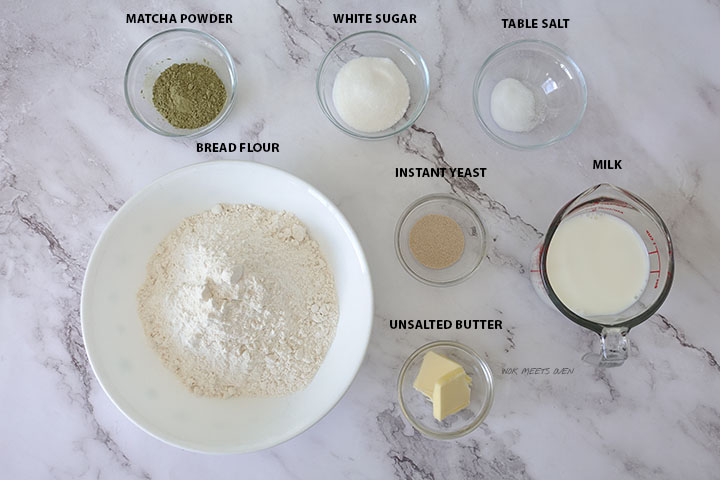
Tangzhong:
Bread flour: 18g
Water 90ml
Dough:
Bread flour: 332g
White granulated sugar: 32g
Table salt: 4g
Instant yeast: 5g
Lukewarm milk: 208 ml
Unsalted butter: 20 g (room temperature)
Matcha Powder: 8g
Directions
To start, we’re going to make our Tangzhong.
In a small sauce pan, add in your bread flour and water.


Heat the mixture over low heat while constantly stirring it until the Tangzhong becomes a thick paste.
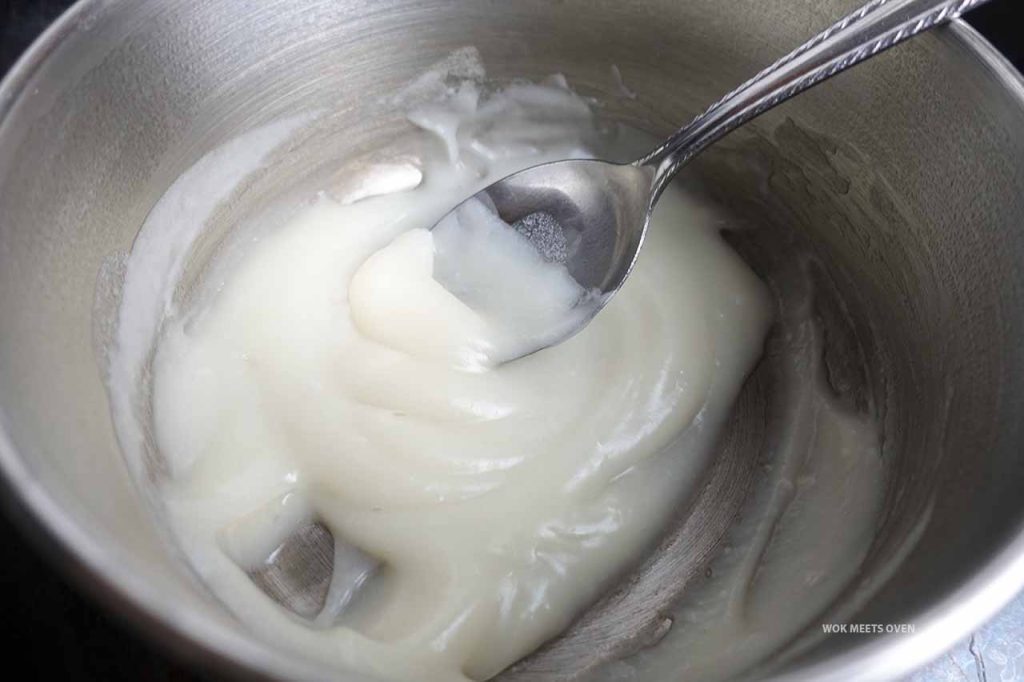
Remove it from the stove, cover it with plastic wrap and store in the fridge for at least 20 minutes to allow the Tangzhong to cool down.

Next, in a large mixing bowl, add in your bread flour, sugar, salt, instant yeast, matcha powder, and the Tangzhong from earlier.




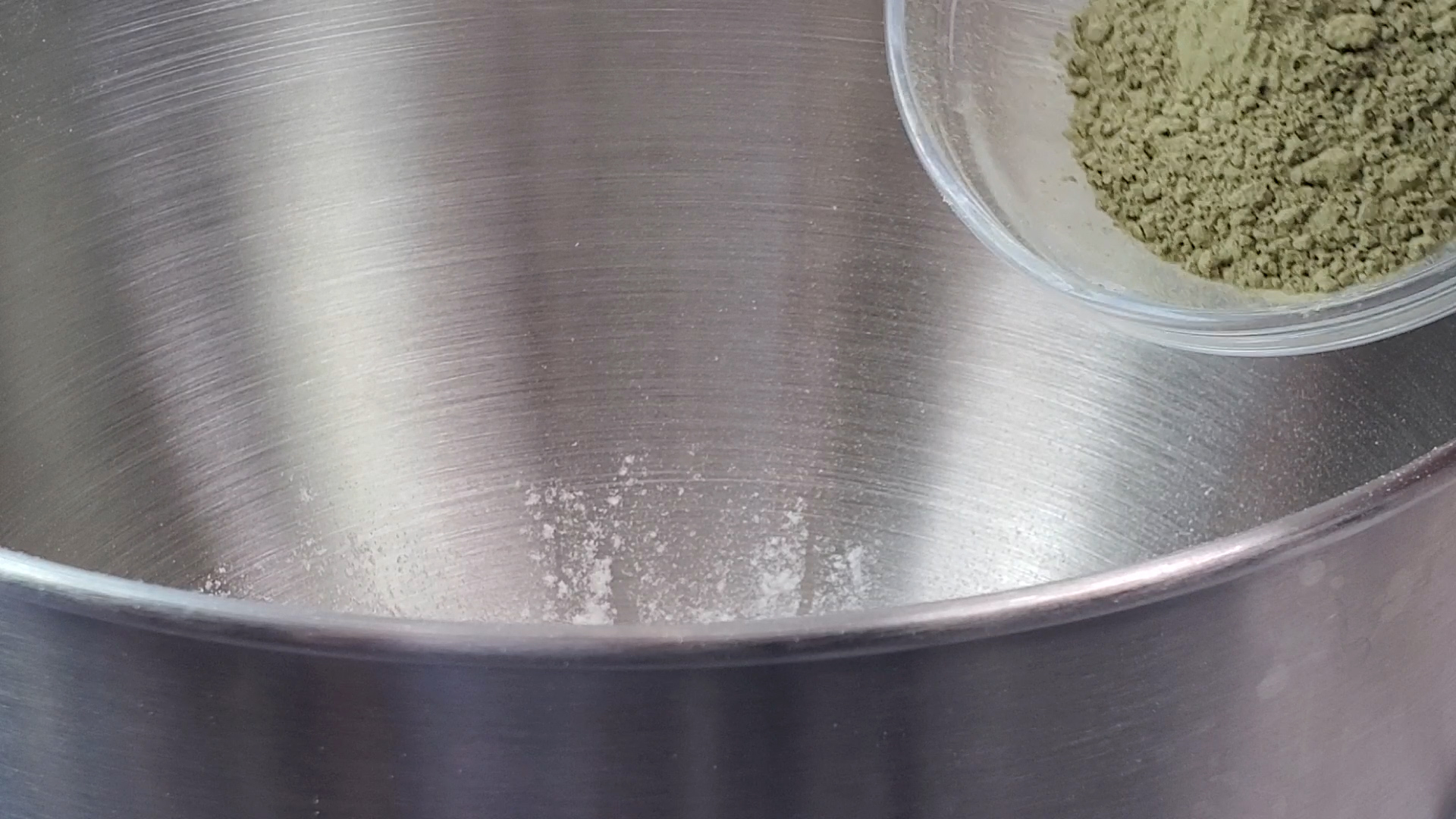
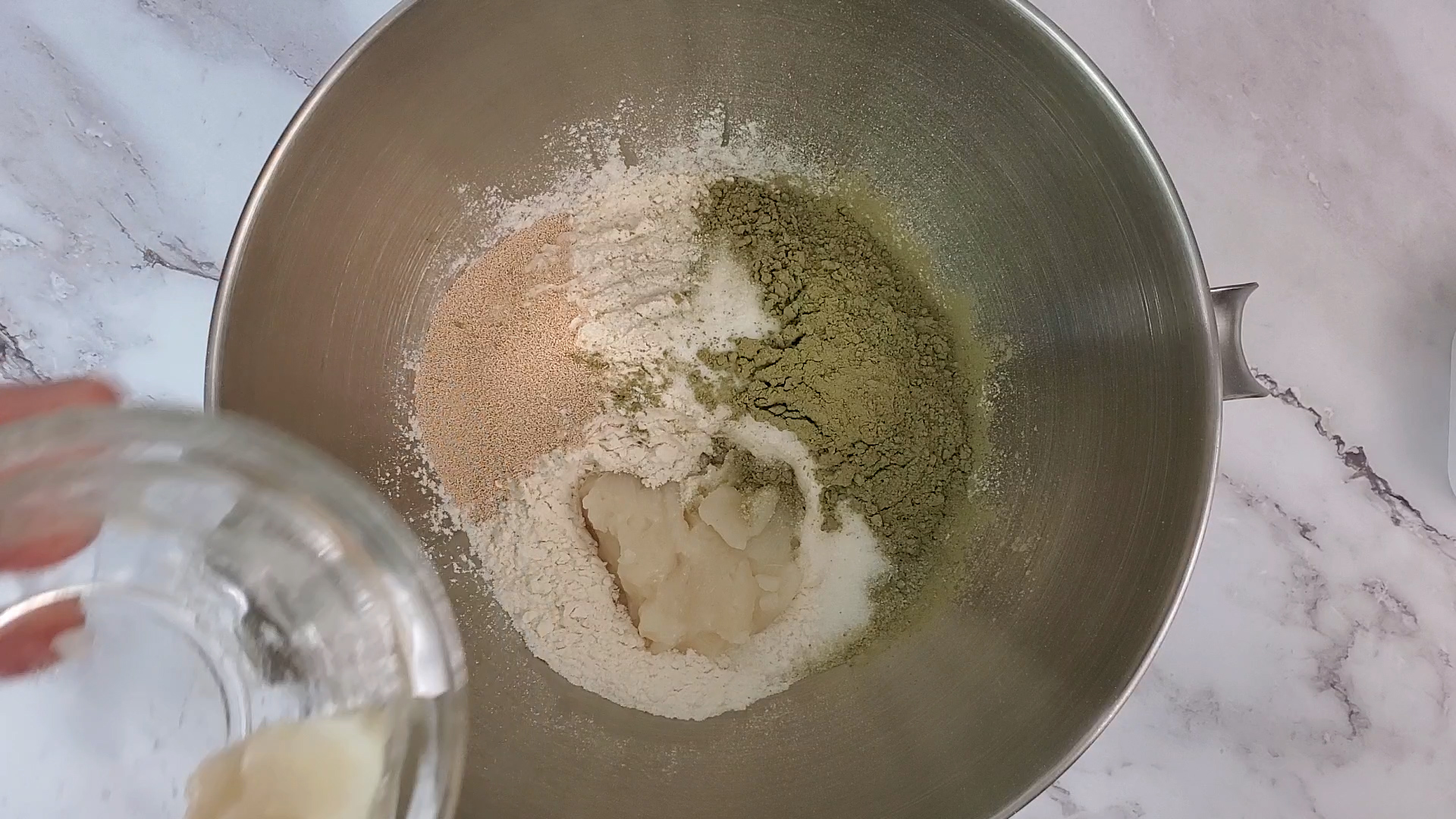
Now using a stand mixer, give the dough mixture a quick few whisks then slowly add in your milk.
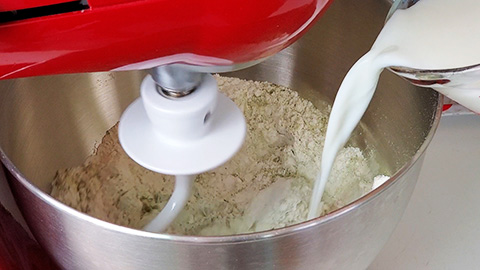
Continue mixing everything for 3-4 minutes then add in your room temperature butter.
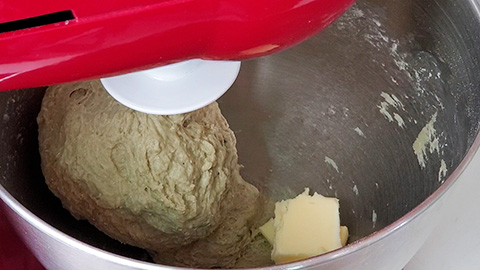
Continue mixing everything for an additional 9-10 minutes or until the dough becomes nice and smooth.
You can check when the dough is done kneading by grabbing a small piece of the dough and stretching it out until light can pass through it and it becomes translucent. If it doesn’t tear then it is ready.
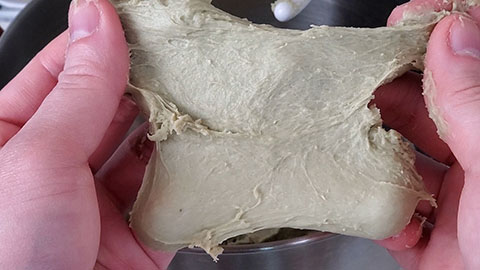
Then transfer the dough to a greased large bowl.
Add some oil to your hands to prevent the dough from sticking to it and then shape the dough into a round ball and place it back into the bowl.
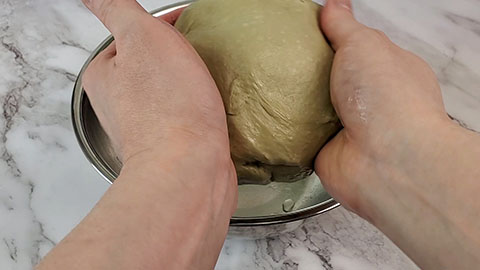
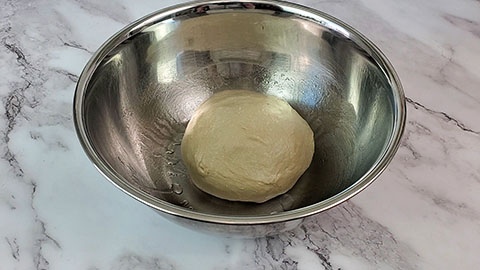
Cover the bowl with plastic wrap or a towel and then let it proof in a warm place until double in size (about 1 hour).
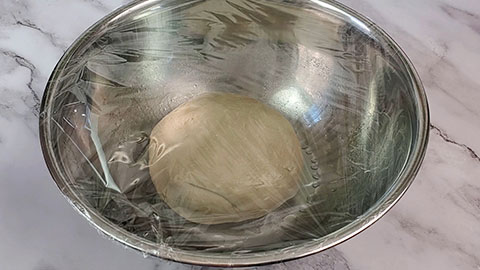
Once the dough is done proofing, de-gase it and transfer it to your countertop.
Shape it into a round ball and then weigh out the dough.
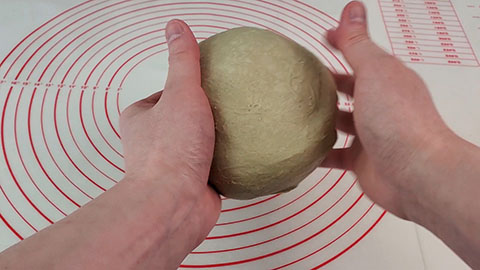
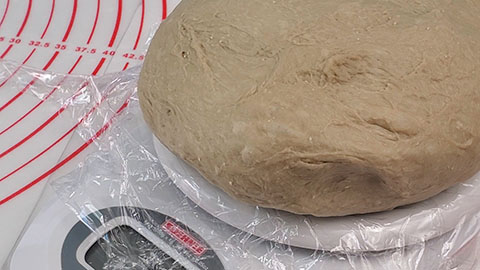
Next divide the dough into 2 pieces and weigh each piece.
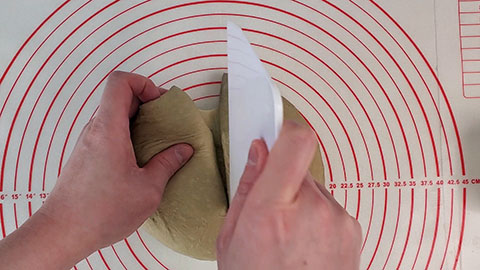
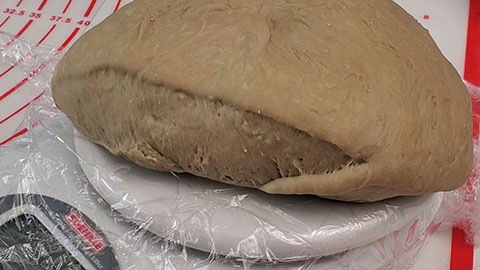
Then shape each piece once again into a round ball.
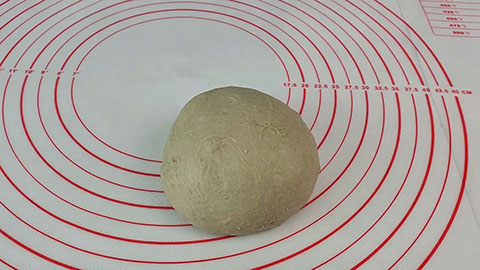
Now cover the two pieces of dough with plastic wrap or a towel and let it rest for 20 minutes.
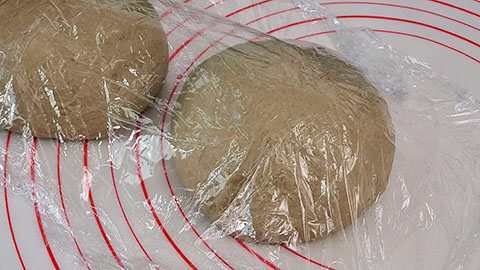
After 20 minutes take out 1 piece and roll it out into a long rectangle.
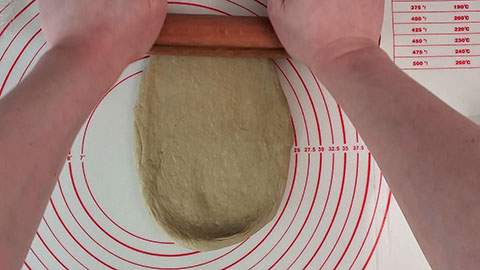
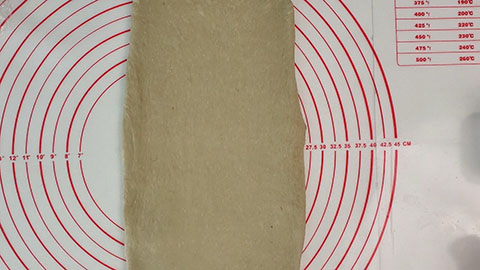
Then fold one end about 2/3 of the way inwards and then fold the other end 1/3 of the way inwards to cover the dough.
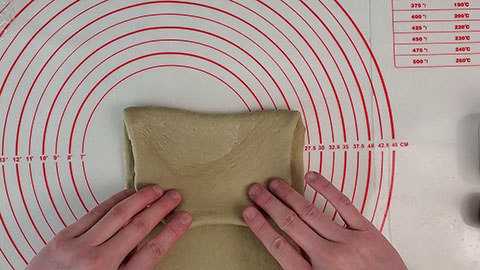
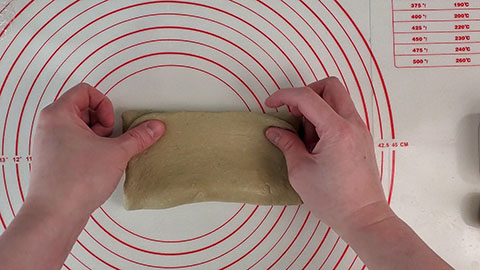
Now roll one end of the dough to the other end.
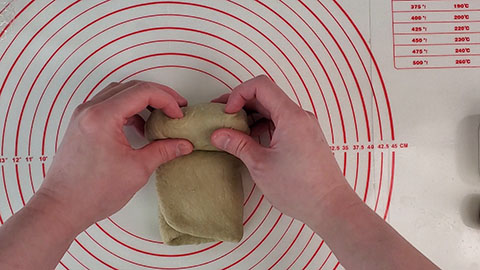
Then pinch the ends of the dough to seal it.
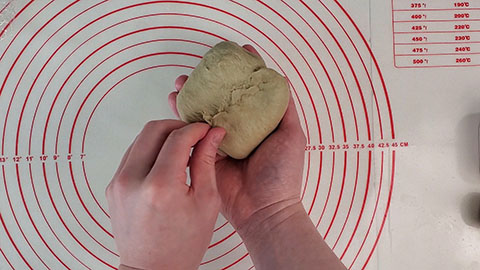
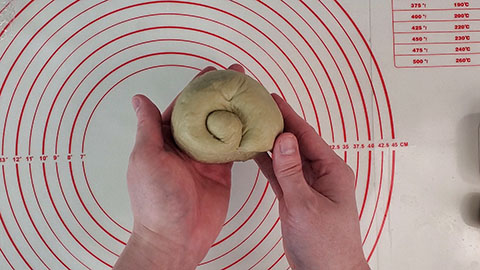
Repeat these steps for the second piece of dough.
Now grease a bread loaf pan with a lid and then place both pieces of dough inside of the pan with the short sides of the dough facing the short side of the pan. I’m using a 450g bread loaf pan here.
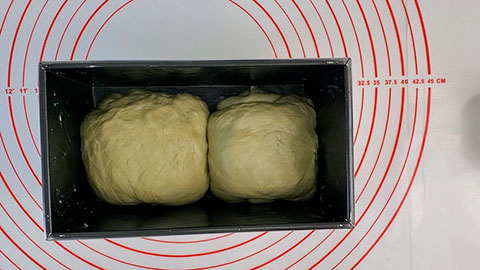
Cover the bread loaf pan now with either some plastic wrap or a towel and let it rise in a warm place until the dough is about 1 inch below the top of the pan.
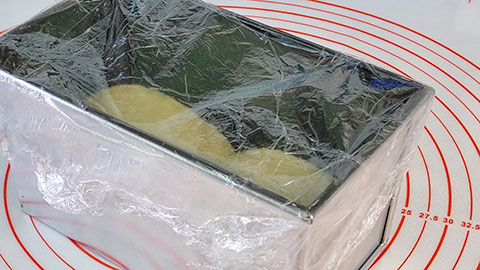
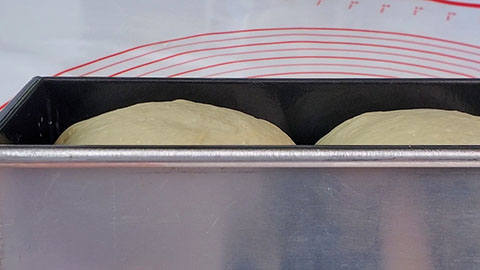
Once the dough is risen about half way in the bread loaf pan, it’s a good idea to preheat your oven to 400°F (200°C).
Once the dough is about 1 inch below the top of your pan, slid the lid into the bread loaf pan and then bake the bread in a preheated oven at 400°F (200°C) for 40 minutes on the middle rack.
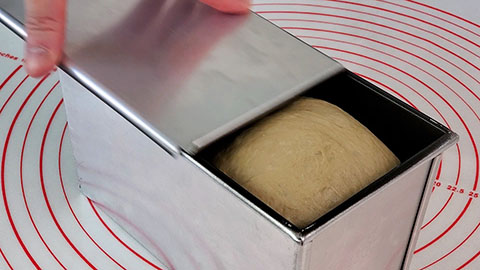
Once the bread has finished baking, immediately take it out of the bread loaf pan and place the bread on a wire rack otherwise it will become soggy inside of the bread loaf pan.
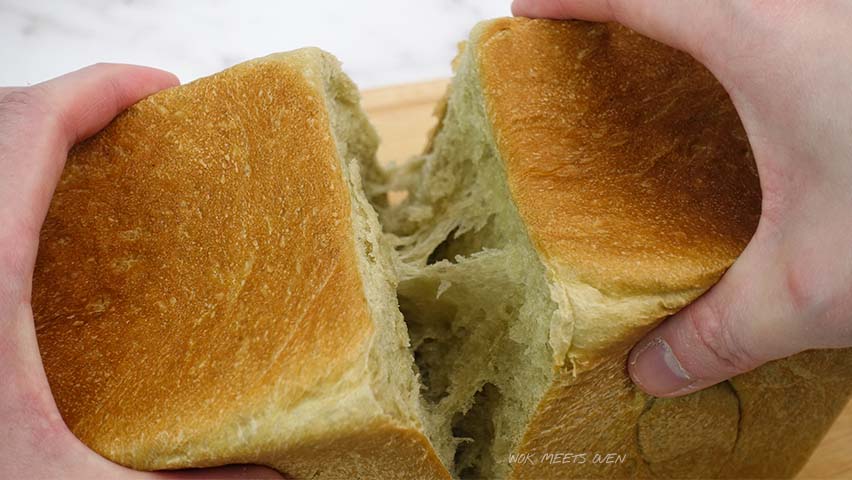
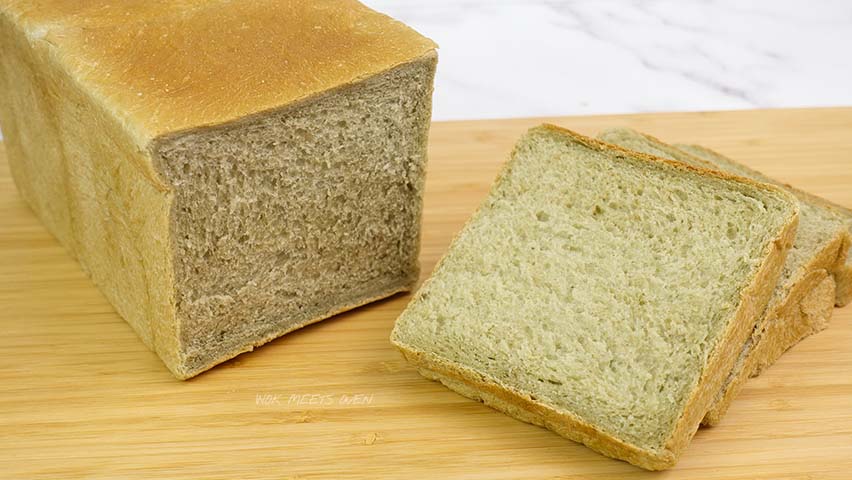
F.A.Q’s
I don’t own a stand mixer, can I hand knead it?
Yes, you can however due note that it will be very sticky and difficult to handle, therefore it is recommended to use a stand mixer. You will almost most likely need to knead the dough longer if you are hand kneading it as well.
I’m Lactose Intolerant, can I substitute the milk with something else?
Yes, feel free to substitute cow’s milk with either water or some other milk substitute such as almond milk.
What to eat with matcha bread?
The matcha bread loaf has a little hint of sweetness already therefore any sort of condiment such as jam would go well with this type of bread. Alternatively you can also try adding fruit, yogurt, butter, etc. In addition you can also eat the matcha green tea bread by itself.
How do I know when my dough has been sufficiently kneaded?
Usually when you have sufficiently kneaded the dough, it will become very smooth and easier to handle. You will also notice that it is less sticky but if you want a nearly full proof way of knowing you can apply the window pane test. Grab a small piece of the dough and stretch it out with your hands until the dough becomes somewhat translucent and light can pass through. If you don’t see it tearing then the dough has been sufficiently kneaded.
My dough is not rising, why?
There could be a number of reasons as to why your dough is not rising such as:
- Your yeast is dead. You can check if your yeast is still alive by taking about 1 tsp of it and adding it to about 1/2 cup of lukewarm water along with a tsp of sugar. DO NOT USE HOT WATER! It will kill the yeast. Wait about 10 minutes and you should see bubbles and foam start to form at the top along with a very sour yeast like smell. If you don’t see this, then the yeast is dead.
- Your environment is too cold. In my experience the yeast needs a warm environment to really bloom. If you live in a colder place then 1 hack you could try is to place a bowl of hot water in the oven and then put your dough in the oven to rise. This will give your yeast a warm environment to proof in.
- You combined the yeast with hot water and killed it
- Your dough was not kneaded properly. See above section.
- You didn’t give it enough time to rise. Yeast depending on brand and the temperature of the environment will vary in how fast or slow it rises. Dough that is left out in a colder environment will take longer to rise and vice versa.
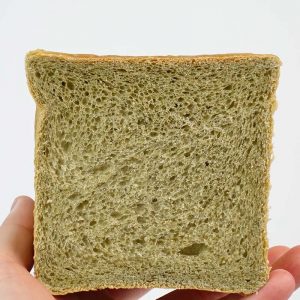
Matcha Bread
Equipment
- 1 stand mixer
- 1 450 g bread loaf pan with lid
Ingredients
Tangzhong
- 18 grams Bread flour
- 90 ml Water
Dough
- 332 grams Bread flour
- 32 grams White granulated sugar
- 4 grams Table salt
- 5 grams Instant yeast
- 208 ml Milk (Lukewarm)
- 20 grams Unsalted butter (Room temperature)
- 8 grams Matcha powder
Instructions
- To start, we're going to make our Tangzhong. In a small sauce pan, add in your bread flour and water.
- Heat the mixture over low heat while constantly stirring it until the Tangzhong becomes a thick paste.
- Remove it from the stove, cover it with plastic wrap and store in the fridge for at least 20 minutes to allow the Tangzhong to cool down.
- Next, in a large mixing bowl, add in your bread flour, sugar, salt, instant yeast, matcha powder, and the Tangzhong from earlier.
- Now using a stand mixer, give the dough mixture a quick few whisks then slowly add in your milk.
- Continue mixing everything for 3-4 minutes then add in your room temperature butter.
- Continue mixing everything for an additional 9-10 minutes or until the dough becomes nice and smooth.
- You can check when the dough is done kneading by grabbing a small piece of the dough and stretching it out until light can pass through it and it becomes translucent. If it doesn't tear then it is ready.
- Then transfer the dough to a greased large bowl.
- Add some oil to your hands to prevent the dough from sticking to it and then shape the dough into a round ball and place it back into the bowl.
- Cover the bowl with plastic wrap or a towel and then let it proof in a warm place until double in size (about 1 hour).
- Once the dough is done proofing, de-gase it and transfer it to your countertop.
- Shape it into a round ball and then weigh out the dough.
- Next divide the dough into 2 pieces and weigh each piece.
- Then shape each piece once again into a round ball.
- Now cover the two pieces of dough with plastic wrap or a towel and let it rest for 20 minutes.
- After 20 minutes take out 1 piece and roll it out into a long rectangle.
- Then fold one end about 2/3 of the way inwards and then fold the other end 1/3 of the way inwards to cover the dough.
- Now roll one end of the dough to the other end.
- Then pinch the ends of the dough to seal it.
- Repeat these steps for the second piece of dough.
- Now grease a bread loaf pan with a lid and then place both pieces of dough inside of the pan with the short sides of the dough facing the short side of the pan. I'm using a 450g bread loaf pan here.
- Cover the bread loaf pan now with either some plastic wrap or a towel and let it rise in a warm place until the dough is about 1 inch below the top of the pan.
- Once the dough is risen about half way in the bread loaf pan, it's a good idea to preheat your oven to 400°F (200°C).
- Once the dough is about 1 inch below the top of your pan, slid the lid into the bread loaf pan and then bake the bread in a preheated oven at 400°F (200°C) for 40 minutes.
- Once the bread has finished baking, immediately take it out of the bread loaf pan and place the bread on a wire rack otherwise it will become soggy inside of the bread loaf pan.

